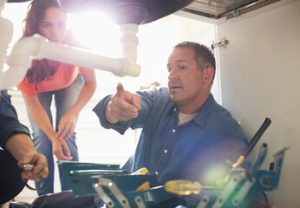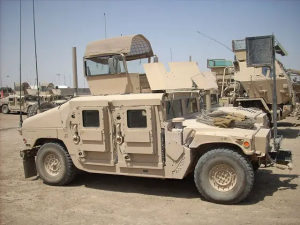Home » 2025 (Page 3)
Yearly Archives: 2025
The Importance of Proper Plumbing Maintenance
Plumbing is a network of pipes and fixtures that deliver water, dispose of waste and vent gas. It’s essential to modern living and, when not properly maintained, can cause a lot of headaches.
As wastewater enters the septic tank, bacteria break down some of it. The oil and grease float to the top, while the heavier solids settle in the bottom as sludge. The pre-processed effluent leaves the tank through perforated pipes into the absorption field or leach field. Visit https://www.plumbing-express.com/ to learn more.

A septic system is an alternative to municipal or county sewer and is necessary when there are too many homes clustered together to be connected to the public sewer line. Properly installing a septic system requires careful planning and attention to detail. A septic tank must be correctly sized to ensure efficient wastewater treatment. A professional can help you determine the right tank size, taking into account the number of people living in your home, the average amount of wastewater per person, and potential future expansions to your home.
Septic system installation is a very technical project, and it is best left to professionals who are licensed and experienced in handling sewage and other hazardous materials. If you try to do it yourself, you may run into problems such as sewage backups, groundwater contamination, and foul odors. Professionals can install a septic system quickly and affordably.
When you’re considering septic tank installation, get several quotes from contractors with references and proof of insurance. This will allow you to compare prices and services and find the best deal. Also, request itemized estimates to clearly see what’s included in the price.
The first step in the septic system installation process is to obtain a permit from the local health department or environmental agency. Once this is done, the contractor can begin excavating the site for the septic system. This is a very detailed process, as the pipe to distance ratio needs to be perfect.
In order to protect against wastewater spills, a watertight seal must be installed on all inlets and outlets. This is important to prevent untreated wastewater from contaminating groundwater and surface water. Tanks can be made of concrete, fiberglass, or high-density polyethylene. All interior surfaces 3 inches below the water line and higher must be coated with bitumastic material to minimize corrosion.
The next part of the septic system is the drain field, which is a series of trenches buried a few feet underground. These are lined with gravel or coarse sand and contain perforated pipes that distribute the wastewater throughout the soil. Understanding your soil type and the proper placement of the trenches is crucial to a successful drain field.
Septic Pumping
Septic tank pumping is a regular service that removes wastewater and solids from the septic system. It is important to maintain this service to prevent system overflow, which can drain into the home and contaminate the soil absorption field. Overflow can also run into nearby water bodies and taint groundwater.
The frequency of septic tank pumping depends on the size of the septic tank and how many people live in the home. The general rule is to have the septic tank pumped every three to five years. However, if the tank is small or a family of large users lives in the home, it may need to be pumped more frequently.
How can you know when the septic tank needs to be pumped? There are many warning signs, including slow drains and toilets that won’t flush. Other signs include wet or soggy areas in the yard and foul odors that indicate that the septic tank is full.
When hiring septic tank pumping services, make sure to get a detailed estimate that includes all charges and fees. There are often hidden charges like inspection and cleaning fees, as well as disposal costs for the waste that is removed from the septic tank. These fees can add up quickly, so it is best to find out upfront what the total cost will be.
It is also helpful to choose a reputable septic tank pumping company that has a good track record and good customer service. Check with friends and neighbors for recommendations and look online for reviews. Once you’ve found a few potential candidates, make phone calls to ask about experience and prices.
Before septic tank pumping begins, the crew will need to locate and access the tank. They will need to remove the lid and carefully remove any sludge or scum from inside the tank. Then, they will inspect the tank for damage and other problems that may need to be addressed. They will also clean the septic tank access lid and clean out the inspection port, as well as the inlet and outlet pipes to the drain field.
Septic Inspection
Septic inspections are an important service to ensure that a septic system is functioning properly. These professional inspections can help prevent expensive repairs and even system replacement down the road. These inspections can also keep your family safe from the health issues that can accompany a malfunctioning septic tank.
Costs for septic inspection services vary depending on the type and scope of the inspection. Routine septic inspections that include basic assessments of the tank, drain field and septic tank lid typically fall within a lower range of costs. Comprehensive septic inspections that are often required by insurers and banks before the sale of a home, however, can carry a higher price tag.
The size of the septic tank is another factor that influences the overall cost. A larger septic tank requires more time and effort to inspect than a smaller one, which can drive up the total cost. The amount of time since the septic tank was last inspected is also something to consider. Regular septic inspections allow professionals to spot trends over time, which can be helpful in predicting future repairs.
During a visual septic tank inspection, the professional will examine the inlet baffle, outlet baffle and partition wall of the tank as well as look for any cracks or damage to the surface of the tank. They will also test the septic system by flushing toilets and running faucets to see if there are any signs of wastewater leaking into areas where it shouldn’t be. In addition, they will probe the leaching area for previous signs of ponding and use a nontoxic dye to identify areas of effluent saturation in the ground.
The professional will also check the septic tank’s sludge level using a “sludge judge,” which measures how much of the tank’s contents are sewage sludge. A high sludge level could indicate that the septic tank is overflowing or needs to be pumped. The professional will also determine if the septic tank and drain field are installed at a proper distance from bodies of water to avoid contamination. If a professional finds any issues with the septic tank or drain field, they will discuss what steps to take with the home seller and home buyer. The home seller may choose to make the repairs or pay for them, or they may decide not to proceed with the sale of the property.
Septic Repair
Your septic system is pretty hearty, but it will only work properly for years to come if you maintain it regularly. If you notice signs of septic tank problems like clogged drains or sewage leaking from the ground, it’s time to call for septic repair services.
Your home’s septic system uses gravel and soil to treat wastewater, removing harmful bacteria, viruses, nutrients, and other waste. The wastewater trickles from pipes through the gravel and into the surrounding soil, where the microorganisms break down the contaminants and allow the clean water to seep into the groundwater supply. When a septic tank or drain field becomes compromised, it can create a hazardous situation for the people and environment around your property.
It’s important to schedule septic tank repairs as soon as possible, so the problem doesn’t worsen. Septic tanks need to be pumped every two or three years to remove the buildup of solids that can clog plumbing fixtures, and the drain fields should be inspected and cleared of obstructions at least once each year.
The cost of septic tank repairs depends on the location and extent of the damage. Typically, the most inexpensive septic system repairs involve replacing a damaged float or repairing a faulty sump pump. However, if your septic tank needs to be removed and replaced entirely, it could cost as much as $20,000.
Repair costs also vary based on the material that your septic system is made from. Plastic septic systems tend to be less expensive to repair than concrete units.
Often, a clogged septic tank or drain field is caused by improper waste disposal practices. Only toilet paper should be flushed, and other solids such as food scraps should never enter the septic system. Avoid planting trees or bushes near the septic system, and don’t park cars or heavy equipment on or over the drain field.
Hiring a professional septic contractor is the best way to save on septic tank and drain field repair costs. These professionals have a comprehensive understanding of plumbing, soil science, and environmental regulations that apply to septic systems. They also know how to safely and efficiently use heavy machinery, such as excavators and bulldozers, for septic tank excavation and replacement projects.
How to Hire a Professional Home Repair Services
The primary benefit of hiring professional home repair services is that they are more cost-effective than attempting DIY projects. DIY enthusiasts may initially think they are saving money by tackling their repairs, but they often need to pay more attention to the expenses associated with tools, materials, and equipment. Additionally, mistakes made during DIY repairs can lead to costly damage that requires professional intervention. Professionals have access to wholesale pricing on supplies and complete jobs more efficiently, saving homeown ers both time and money. Learn More Here!
Hiring professionals to tackle home maintenance tasks also offers other financial benefits, including insurance coverage and peace of mind. Many homeowner insurance policies do not provide coverage for accidents or damages caused during DIY projects, but reputable home repair companies carry liability coverage that can protect the insured against such events. In addition, professionals often have access to specialized tools and equipment that are not available to the general public, allowing them to complete projects more quickly and effectively.

Home maintenance tasks can be complex and potentially hazardous, making them more challenging for untrained individuals to perform safely. Professional contractors are trained and certified in their fields, ensuring that they have the knowledge and expertise necessary to tackle any repair or maintenance job. Furthermore, they follow strict safety standards and regulations, minimizing the risk of injury or property damage.
Aside from reducing the risk of injury, professional home maintenance services can also save homeowners money on their energy bills. Through regular inspections, professional technicians can identify areas where energy is being wasted and implement energy-efficient solutions to reduce utility costs.
In the long run, investing small amounts in preventative home maintenance can be much more cost-effective than repairing or replacing expensive equipment that would otherwise fail due to neglect. It is also less expensive to make minor repairs than to replace entire systems such as heating and cooling units, water heaters, or appliances.
Safety
Owning a home brings with it a sense of pride and security, but it also comes with the responsibility of maintaining and repairing it as needed. While DIY repairs are often an option, some home repair tasks are so complicated, time-consuming or risky that a professional should be hired. Professional home maintenance services follow a set of guidelines and procedures, ensuring that all work is done safely and correctly.
In addition, professional services are licensed and insured, protecting homeowners from liability. While these precautions reduce the likelihood of accidents or injuries, they may still occur during a home repair project. Those who choose to hire a professional should be sure that the service is bonded, meaning that money has been set aside in the event of a dispute over work or damage.
Another way to stay safe during home repair is to eliminate distractions and remain aware of the surroundings. This will allow you to keep an eye on the repair worker and to quickly exit a room in the event of a fire or other emergency. It is also a good idea to remove valuables from areas where workers will be working, either storing them in a safe or locking them away in a room that has an exit door.
When it comes to hiring a professional for home repair, it is important to take the time to interview potential candidates and meet with them in-person for a bid or consultation. This allows the homeowner to gauge their level of professionalism and trustworthiness. Hiring a professional with a strong reputation in the community will help ensure that your home repairs are performed to the highest standard.
It is also a good idea to ask prospective contractors about their safety policies and whether they provide training for all employees. A reputable contractor will be happy to share this information and will be willing to answer any questions that you might have. You should also look for a company that offers a wide range of services, as this will provide greater consistency in the quality of workmanship.
Time-Saving
Home maintenance and repair is often a time-consuming process. It can take hours or days for an inexperienced homeowner to repair a simple issue like a leaky pipe or broken switch. A professional, on the other hand, can perform these tasks in a fraction of the time. This is particularly true if the professional has the right tools and knowledge of the task at hand. It is also worth noting that the more a person practices a certain skill, the better they become at it. Therefore, a professional handyman who has worked on many repair projects will have the experience and expertise to finish a project quickly and accurately.
In addition to saving on time, a professional home repair service will save on the cost of purchasing and maintaining specialized tools. For example, a handyman who specializes in plumbing repairs will already have the proper tools and know-how to perform such projects. On the other hand, an inexperienced homeowner may have to purchase tools for each task they attempt. This can add up over time and lead to significant costs.
Professionals also have the skills to perform structural alterations and repairs in a way that will minimize the risk of further damage or safety hazards. In contrast, DIY projects can potentially lead to structural deterioration and costly mistakes that require further repairs.
A well-maintained property is an asset that will improve your quality of life and increase its value in the market. However, this requires regular maintenance and timely repairs. It is a good idea to hire professionals for such services as they can provide insurance coverage, offer valuable expertise and save you both money and time.
While it is recommended to do some basic maintenance at home, a lot of work can be left to the experts. It is also recommended to prioritize routine maintenance, as it can prevent minor problems from escalating into expensive ones. This can include routine inspections of your electrical systems, repairing cracked windows, cleaning gutters and water heaters, removing leaves and debris, and other tasks. Doing so will ensure the long-term performance of your home and avoid expensive repairs in the future.
Peace of Mind
When people speak of peace of mind, they usually mean a feeling of calm and contentment. This is often a desired state in stressful times, such as in the aftermath of tragedies. Those who struggle to find peace of mind may benefit from therapy or other forms of mental health care.
While it is possible to find peace of mind through meditation or other self-care methods, many people do not experience it due to a variety of reasons. For example, they may struggle with anxiety or other mental health conditions that make it difficult to relax. Additionally, they may be unable to find peace of mind because of financial problems or other difficult circumstances.
Regardless of the reason, it is important for everyone to find peace of mind. By reducing stress, practicing mindfulness, and making healthy lifestyle choices, it is possible to achieve peace of mind in daily life.
Professional home repair services can provide peace of mind by ensuring that repairs are done correctly and safely. Professionals have the skills and expertise to handle a wide variety of home repairs, including structural alterations, roofing, plumbing, electrical work, gas-related repairs, foundation fixes, and more. In addition, they are familiar with local building codes and safety standards, minimizing the risk of errors that could lead to costly damage or dangerous situations.
In addition, professional home improvement companies typically offer warranties and guarantees for their work. This provides peace of mind because it allows you to seek a refund or repair work if the work is not up to par. In addition, it offers a sense of security that the work will be completed properly and quickly, allowing you to focus on other aspects of your life.
